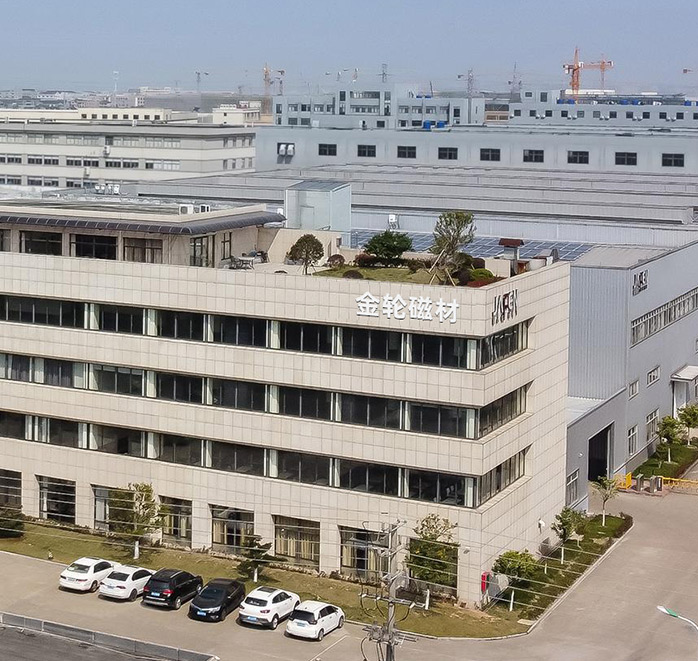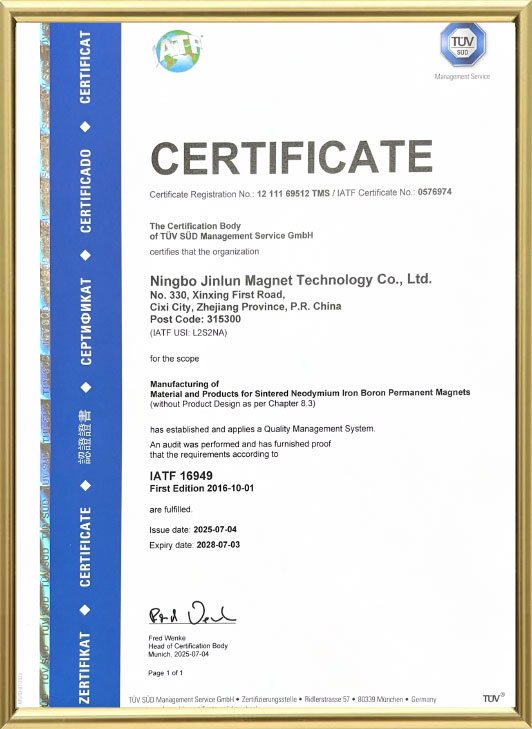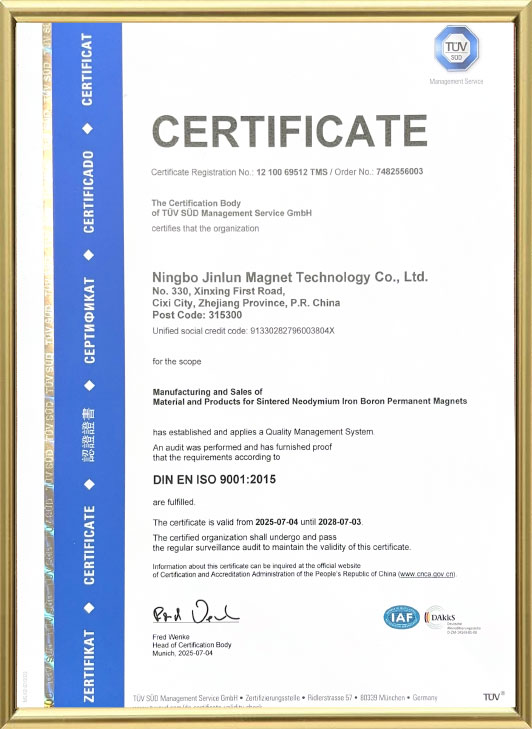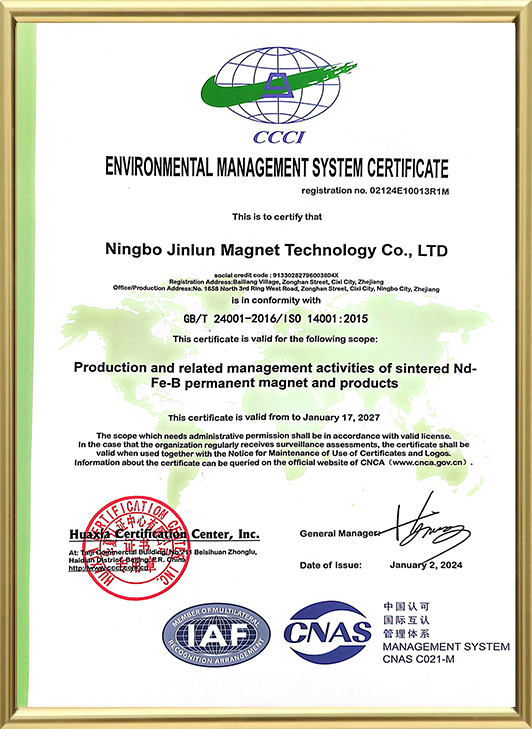I. Industry Positioning and Market Value: The "Magnetic Core" of Medical Devices
(I) Core Role
Sintered NdFeB Magnets for Medical Apparatus are key components enabling modern medical devices to achieve "precision diagnosis, minimally invasive treatment, and portable applications." With their high magnetic energy product (BH) max of 350-450 kJ/m³), high magnetic uniformity, and stable magnetic properties, they replace traditional ferrite and alnico magnets, creating precise magnetic field environments in the three core areas of medical imaging, in vitro diagnostics, and therapeutic devices. These magnets directly impact the detection accuracy, treatment safety, and ease of use of medical devices, making them a key bottleneck in the development of high-end medical devices.
(II) Market Size and Growth Strategies
The global medical device market maintains an average annual growth rate of 5%-7%, driving continued growth in demand for sintered NdFeB magnets for medical applications. According to industry statistics:
In the medical imaging field, each small- to medium-sized magnetic resonance imaging (MRI) device requires 0.5-1.2 tons of these magnets, while high-end 3.0T MRI devices demand 1.5-2.0 tons.
In the in vitro diagnostic field, each fully automated immunomagnetic separation tester requires 50-100 micromagnets (2-5mm in size).
In the therapeutic device field, a single magnetically guided minimally invasive surgical robot requires 500-1000 micromagnet arrays.
The global medical sintered NdFeB magnet market exceeded US$2.5 billion in 2023 and is expected to exceed US$4 billion in 2028, with a compound annual growth rate of over 10%. Highly uniform and biocompatible magnets offer the highest added value, with gross profit margins 30%-50% higher than industrial-grade magnets. As a leading domestic manufacturer and wholesaler of sintered NdFeB magnets, NINGBO JINLUN MAGNET TECHNOLOGY CO., LTD. continues to invest in this high-value-added sector, leveraging its high-performance magnet production capabilities to capture market share.
II. Application Scenarios: Classification by Medical Device Function
(I) Medical Imaging Equipment: Creating a "High-Definition Magnetic Field"
MRI Equipment: Serving as the core of the main magnetic field in MRI equipment, sintered NdFeB magnets for medical apparatus are typically assembled in annular or sector-shaped arrays, generating a uniform magnetic field of 0.5-3.0T. For example, in a 1.5T open MRI system, the magnet array must maintain a magnetic field uniformity deviation of ≤5ppm within a 50cm diameter imaging area, ensuring soft tissue imaging resolution of 0.1mm, facilitating accurate diagnosis of early-stage tumors and neurological disorders.
In ultrasound diagnostic equipment, in the vibration assembly of the ultrasound probe, a miniature magnet (3-8mm in size) drives the piezoelectric ceramic to vibrate at a high frequency (2-10MHz). This high magnetic energy product improves the penetration and signal-to-noise ratio of the ultrasound signal, boosting image clarity in fetal and cardiovascular ultrasounds by 20%-30%.
(II) In vitro diagnostic devices: Accelerating "precision testing"
Immunomagnetic separation devices: These magnets create a gradient magnetic field (magnetic field gradient ≥ 15 T/m) to rapidly capture magnetic markers (such as the tumor marker CA125 and COVID-19 antigens) in blood and body fluid samples, reducing detection time from two hours using traditional centrifugation methods to less than 30 minutes. They also increase detection sensitivity tenfold, with a minimum detection limit of 0.1 ng/mL.
Magnetic immunochromatographic test strips: These rapid test strips incorporate nanoscale sintered NdFeB magnetic powder (particle size 50-100 nm) labeled with antibodies. An external magnetic field guides the rapid migration of the magnetic powder-antibody complex, enabling quantitative testing of blood glucose, blood lipids, and other indicators within 15 minutes, with an error of ≤5%.
(III) Treatment and Assistive Devices: Achieving "Minimally Invasive Safety"
Magnetic Navigation Minimally Invasive Surgical Robots: Arrays of Sintered NdFeB Magnets for Medical Apparatus generate a controllable magnetic field (magnetic field strength 0.5-1.0T) to precisely guide magnetic surgical instruments (such as catheters and biopsy needles) within the body to the lesion location, keeping the surgical error within 1mm. Compared to traditional laparoscopic surgery, this reduces the invasive area by 80% and shortens the patient's postoperative recovery time by 50%.
Magnetic Therapy Devices: In chronic pain treatment devices, the static magnetic field generated by these magnets (strength 0.1-0.3T) acts on localized tissues, promoting blood circulation and relieving muscle spasms. It has an efficacy rate of over 70% in the adjunctive treatment of cervical spondylosis and arthritis.
III. Core Performance Standards: The "Strict Threshold" for Medical-Grade Magnets
(I) Magnetic Performance: Prioritizing Both Precision and Stability
High Magnetic Uniformity: Magnets used in medical imaging equipment must meet the requirement of "magnetic field uniformity deviation ≤ 5 ppm within a 20 cm imaging area diameter." Deviations exceeding 10 ppm can cause image artifacts and affect lesion identification. Magnets used in in vitro diagnostic equipment must have a magnetic energy product (BH) max deviation of ≤ ±1% to ensure repeatable test results.
Low Temperature Sensitivity: Medical equipment must operate over a wide temperature range (-20°C to 60°C). The magnet's remanence temperature coefficient (αBr) must be ≤ -0.10%/°C, its intrinsic coercivity temperature coefficient (βHcj) must be ≤ -0.5%/°C, and its magnetic performance decay rate must be ≤ 2% after 24 hours at 60°C to prevent testing/treatment errors caused by temperature fluctuations.
(II) Safety Performance: Biocompatibility and Environmental Compatibility
Biocompatibility: Magnets that come into direct or indirect contact with the human body (e.g., magnets used in surgical instruments) must be treated with a Parylene C coating (5-10μm thick) or a medical-grade epoxy resin coating and certified for biocompatibility according to ISO 10993-1 to ensure non-cytotoxicity, non-sensitization, and non-hemolysis.
Low Magnetic Leakage and Interference Resistance: The 5 Gauss line (magnetic safety line) surrounding the MRI device must be controlled within 1 meter of the device casing to avoid interference with peripheral equipment such as ECG monitors and defibrillators. Magnets used in diagnostic equipment must exhibit electromagnetic interference resistance, with magnetic property fluctuations of ≤1% in an electromagnetic environment of 1000V/m. (III) Physical Properties: Miniature and High Precision
Miniaturized Size: Magnets used in minimally invasive surgical instruments and micro-diagnostic devices are typically ≤3mm in size (e.g., a cylindrical magnet with a diameter of 1mm and a length of 3mm). Dimensional tolerances must be controlled within ±0.01mm, and the curvature error of curved magnets must be ≤0.005mm to ensure precise fit within the instrument structure.
High Mechanical Strength: Magnets used in surgical instruments must withstand frequent operational stresses, with a bending strength of ≥25MPa and a compressive strength of ≥800MPa. They must withstand an axial load of 10N without breaking or deforming, ensuring a safe and reliable surgical procedure.
IV. Manufacturing Process and Technological Breakthroughs: Overcoming "Medical-Grade Challenges"
(I) Core Manufacturing Process: A "Precision Control Journey" from Raw Materials to Finished Product
Ultra-high-purity Raw Material Preparation: Using 99.99% high-purity rare earth elements (Nd, Dy) and 99.95% low-carbon electrolytic iron, alloy ingots are produced through vacuum induction melting (vacuum ≤ 10⁻⁴Pa). Oxygen content is controlled below 200ppm and carbon content ≤ 0.003% to prevent impurities from affecting magnetic uniformity.
Precision Powdering and Orientation: After embrittlement of the ingots using a hydrogen crushing (HD) process, they are jet-milled to produce a uniform powder of 1.5-2.5μm with a particle size distribution deviation of ≤5%. A 2.0-2.5T magnetic field is used for orientation. High-precision directional magnetic fields, combined with finite element simulation to optimize orientation, ensure consistent magnetic domain alignment and enhance magnetic uniformity.
Micro-molding and low-temperature sintering: Micro-magnets are molded using a servo-driven micro-precision press (pressure control accuracy ±0.1N), achieving a green density uniformity deviation of ≤1%. Sintering temperatures are controlled between 980-1050°C (50-100°C lower than industrial magnets), with a ramp rate of 2°C/min and an 8-hour hold time, minimizing sintering deformation and achieving a density of ≥7.5g/cm³.
Precise post-processing and full inspection: Diamond micro-wire cutting (cutting accuracy ±0.005mm) and micro-grinding are used to ensure dimensional accuracy. Surface coating is applied using an automated Parylene spraying machine, achieving a coating thickness deviation of ≤0.5μm. Finally, magnetic properties are tested using a magnetic tester (accuracy ±0.1%), a coordinate measuring machine (accuracy ±0.001mm), and biocompatibility testing, ensuring 100% inspection.
(II) Key Technological Breakthroughs: Addressing Industry Pain Points
Ultra-High Magnetic Uniformity Control: Through the "multi-stage magnetic field orientation + local magnetic field compensation" technology, adjustable magnetic permeability blocks are installed in the orientation mold to adjust the local magnetic field strength in real time, reducing magnetic uniformity deviation from 15ppm in traditional processes to below 5ppm. Ningbo Jinlun Magnetic Materials Technology Co., Ltd., a rapidly growing, innovative technology company with deep expertise in the magnet industry, has achieved a uniformity deviation of ≤3ppm for magnets used in MRI equipment, reaching industry-leading standards.
To prevent cracking during micro-magnet molding, the company developed a "gradient pressure molding process" that gradually increases molding pressure from the center to the edge (pressure gradient 5-10MPa/mm). Combined with a nano-lubricant (addition level 0.1%), this process addresses issues such as chipping and density unevenness during micro-magnet molding, increasing the molding yield from 80% to 98%.
Improved sterilization resistance: Through composition optimization (addition of 0.5%-1% Nb) and grain boundary strengthening, the magnets achieve a magnetic performance degradation rate of ≤1% after autoclaving at 134°C and 0.2MPa, with no coating flaking, meeting the requirements for repeated sterilization (≥100 times) of medical equipment.
 EN
EN English
English 中文简体
中文简体 русский
русский Deutsch
Deutsch 日本語
日本語 한국어
한국어



























